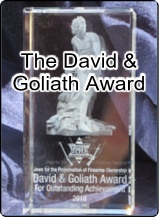

New York’s Unconstitutional Gun Law
Was Written By a Notorious, Corrupt Thug
The Sullivan Act was named after Timothy D. Sullivan,
one of the most corrupt politicians of his age.
By David Harsanyi. June 27, 2022
On the morning of January 23, 1911, an unstable Harvard graduate with the theatrical name of Fitzhugh Coyle Goldsborough walked up to the novelist David Graham Phillips on a Manhattan street and unloaded six shots from his .32-caliber pistol into him. Goldsborough, who believed the novelist had defamed his sister, reloaded his gun, placed it against his temple, and pulled the trigger. Goldsborough died instantly.
The murder-suicide shocked the city. Although the crime destroyed many lives, none of them would change history quite like George Petit le Brun, the man who performed the autopsies on the bodies at the city coroner’s office.
“I reasoned that the time had come to have legislation passed that would prevent the sale of pistols to irresponsible persons,” he later wrote. After two years of imploring local politicians to institute 'gun control' laws, le Brun finally found an ally in Timothy D. Sullivan, one of the most corrupt politicians of his age, a Tammany Hall operator known to New Yorkers as “Big Tim.”
One of the big talking points in the aftermath of the Supreme Court’s New York State Rifle and Pistol Association v. Bruen decision last week—it is mentioned in nearly every news piece—is that New York’s “may issue” permit law had been on the books for more than 100 years. And that’s a long time. But time does not make a law constitutional or efficacious.
..... 
Many probably do not realize just how long ago NY State enacted such a statewide infringement of the 2A. The fact that it survived so long shows just how much the state had held on to it, until thankfully SCOTUS has at last nullified it.
![]()

























